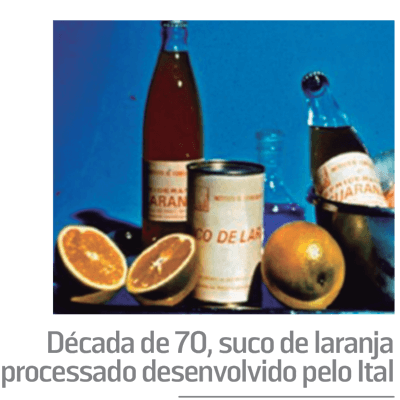ORIGIN OF INDUSTRIALIZED JUICE
The habit of drinking fruit juice has been developed for many centuries in the mankind, both for the sensory aspects of the beverage, as for the association to healthiness. It is illustrated in the first part of this publishing, with the evidence of studies about juice color and odor, in the Pliny the Elder’s work, and in the legal requirement for including citric juice in the basic feeding of the English cargo ships. However, the technology to preserve the flavor and nutritional content in large-scale production only took place more recently, in the middle of the 20th century, from the advances in food science and technology.

Fruit juice extraction is a millennial process. There is evidence of grape juice extraction by the year 8.000 B.C., probably to make wine.

Since its origin, juice has been consumed as a tasteful meal accompaniment. Due to its sensory attributes, several studies have been made, such as Pliny the Elder’s work, elaborated in Rome, 77 A.D., which evaluated the color and odor of several types of fruit, such as pear, blackberry, black grape, white grape, plum, apple and peach.

The fruit juice industrial production is more recent in the mankind history, and its evolution for consumption as beverages in packages had always been associated and dependent on the development of food science and technology. The pasteurization process, important to prevent deterioration by microorganisms and enzymes, patented in 1865, it enabled the production of grape fruit bottled by Thomas B. Welch, em 1869.

Associated to the pleasure of drinking fruit juice, whether at meals or not, the recognition of the benefits to the health was a determining factor to the promotion of these beverages in the human feeding, making them a product of great commercial value. The nutritional value was one of the foundations for the lemonade and orange juice marketing in Europe of XVI to XVIII centuries. At the same time, the institutional market was developed, as demonstrated in the Merchant Transport Law of 1867, requiring that British ships to take citric fruit juice inside to prevent diseases.

UHT (Ultra High Temperature) technology for pasteurization, existing since 1957, started being used in Brazil in the 70s, allowing packing the beverage in long life package. In 1970, Ital installed their first pilot plant for processing concentrated juice in Brazil and later on they developed a technology for processing and packaging pasteurized orange juice (NFC – not from concentrate), in partnership with the company Tetra Pak.




